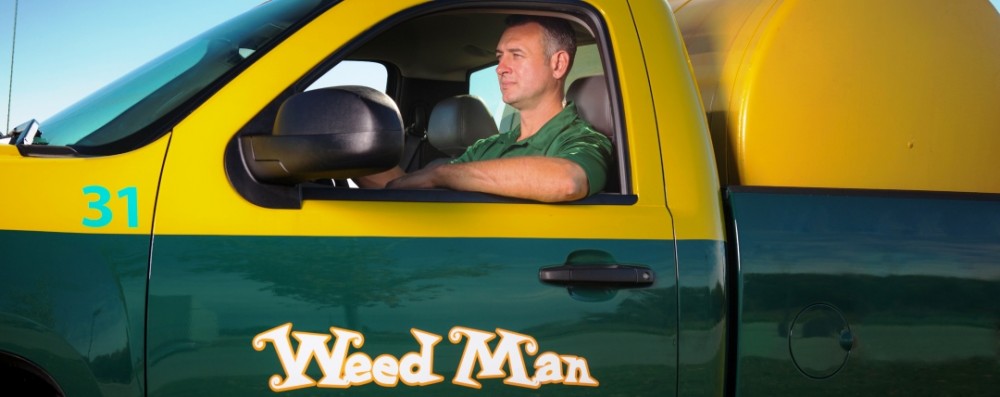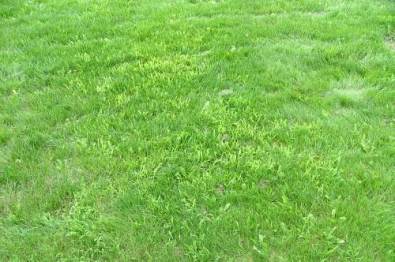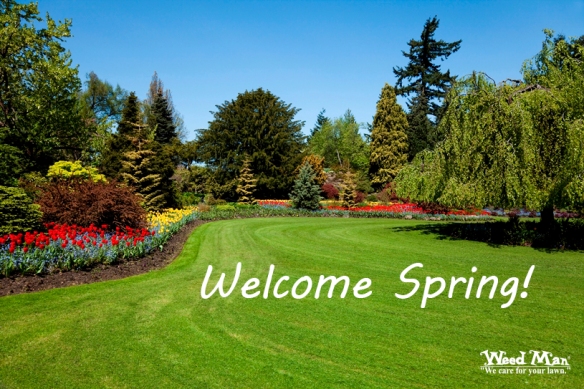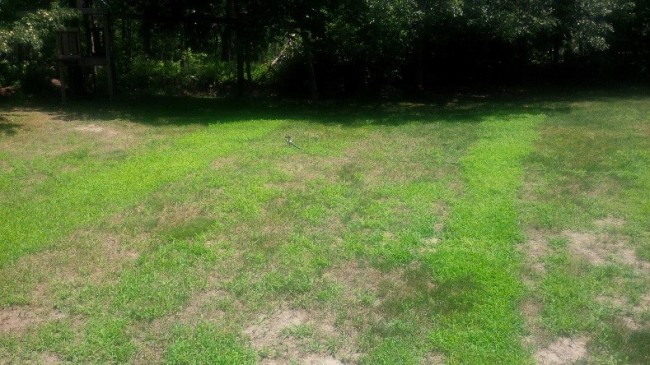Tune in to Episode 01 of Weed Man’s newest podcast series. Chris Lemcke talks slow release fertilizers, pre-emergent crabgrass control, and why proper watering and mowing play such a significant role in the health of your lawn.
Text Version of Podcast:
Welcome to Episode 1 of On the Lawn with Weed Man – Weed Man USA’s newest podcast series covering a wide range of helpful lawn care tips and advice. It’s our goal to help you achieve a lush, green lawn without breaking the bank.
I’m Erica Knapp and today I’m joined by Chris Lemcke, Weed Man’s in-house turf expert. Welcome, Chris!
Chris: Thanks, I’m happy to be here.
Erica: Today we’ll be tackling spring lawn care and addressing some of the most frequently asked questions from homeowners across the country. We’ll also be touching on what you can be doing to ensure that your lawn stays healthy and free of weeds throughout the spring and summer seasons. Now that the warmer weather has arrived, creating an attractive, functional outdoor space is more important than ever. Chris, we’re currently getting a number of calls about fertilizer. It’s already late April, and many homeowners are wondering if it’s too late to fertilize their lawns at this point in the season.
Chris: Not at all…this time of year is the perfect time. After a harsh winter when the lawns are starting to green up, it’s a great time to get some fertilizer down on the lawn to help it out and get it growing again. One of the things I often talk about to homeowners or to people who are asking questions about what type of fertilizer they should use…the biggest thing they should look at is slow release. Anything that they can put on the lawn that will feed the lawn slowly. Slow release will help ensure there’s no burning, and it’ll help ensure that all the nitrogen is being used efficiently, and that’ll definitely help the plant out this spring, especially after the long, hard winter.
Erica: Ok, good to know that it’s not too late and that there’s plenty of time to still fertilize. We’ve also had many customers ask us when they should be putting a pre-emergent on the lawn for crabgrass control. What would you suggest when it comes to pre-emergents?
Chris: When it comes to pre-emergents, there’s two different types. One you have to get down before the crabgrass germinates, and that’s prodiamine – that’s the active ingredient. You want to make sure that’s down well before the crabgrass starts to grow. Typically, ways to look at when crabgrass is going to start germinating is by looking at the forsythia bush. When that starts to bloom that usually means that soil temperatures are warm enough and crabgrass will start germinating. For me, I typically look at when the farmers are in the fields starting to plant corn. When corn starts to germinate and starts to grow, and farmers are in the field seeding it, that’s often a good indication that soil temperatures are right and that you’re going to start seeing crabgrass germinating. The other type of pre-emergent is dithiopyr. That one you can put down later. You still want to get it down before the crabgrass germinates, but in case there are any spots where you get crabgrass germinating early, like in sunny areas, it will take out some of the smaller growth – up to the 3rd or 4th tiller stage – of the crabgrass plant. So that’s a good one because if you are late getting it down, you’ll still get some of those plants that have already started to germinate. But it’s all based on soil temperatures. Getting it down early is better than getting it down late.
Erica: We mentioned that the winter’s been really harsh, and that’s true for many, many parts of the country. So how long until lawns really start recovering? It seems like they’re already a bit behind this year.
Chris: Depending on where you are in the country, things in the east especially are definitely a little bit behind. But lawns are going to take time to green up until the soil temperatures warm up a little bit more. We’re seeing it slowly start to come around. The warmer it gets, the better the grass will start to grow…and it’ll grow out some of that winter damage. But it’s just one of those years where it’s going to take a little bit longer before the grass really starts to take off and grow. Before long we’ll be in summer, so it doesn’t take long and it will happen.
Erica: So homeowners don’t need to be worried about the state of their lawns right now?
Chris: Not right now. I mean, it’s a good opportunity. If it’s too quick of a spring, then a lot of people don’t have time to give the lawn a good raking and things like that. So you’ve got time to go out and work on your lawn a little bit, rake out those straw-like areas, maybe check on if there’s winter damage or not – those types of things. It gives you a little bit of time, that’s the one thing about it.
Erica: On a similar topic, we’ve seen a lot of lawns with heavy damage from snow plows or debris that had been left on the lawn all winter. What’s the best way to handle these bare spots – and some of these spots are turning into large patches…how can homeowners tackle these?
Chris: Sometimes you have to wait and see if it is actually winter damage or not, because sometimes it will recover, and it will grow back out. But if it’s definitely an area with snow plow damage or an area that has a poor root system – so if you pull on the grass and it just kind of desiccates, there’s not much rooting structure – then likely that area is dead. The easiest method is to wait until you get some sod at the local home hardware store – they’ll sell it by the roll – and it’s best to patch the sod pieces into the lawn as opposed to seeding it. Seeding it takes a lot of effort and you have to keep the seed moist for at least 30 days. Then you also have weeds that will grow in those spots. So the best thing to do would be sod it. For small areas, if you want to seed it just be aware that you can’t seed if you’re going to do a pre-emergent like we talked about earlier, as it won’t let the seeds germinate.
Erica: Good advice. Now to address the question that everyone’s been asking. What can homeowners do themselves to achieve the best lawns this year?
Chris: Well there’s a few things that they can do. A lot of people put time and effort into fertilizing and taking care of their weeds, and yet they are never happy with the way that the lawn looks. Sometimes that’s because of the things they’re doing culturally. The first important thing that they need to do properly and to follow as best as possible is watering. All too often people will set an irrigation system up or they’ll water too shallow and every other day as opposed to when the lawn needs it. So the first suggestion I have is to water when the lawn needs it, water deeply (as opposed to shallow), and water at the right time. Don’t water at night – water early in the morning. Watering early in the morning is better because you don’t encourage diseases. You want to make sure that the lawn is getting watered deeply. That keeps the roots growing deep as opposed to being up shallow if you shallow water.
The second thing that homeowners often do improperly is mowing. They want to make the lawn look like a golf course, so often times they’re cutting the lawn very, very short. This encourages weeds and weedy grasses to grow in the lawn. If you keep the lawn nice and long – usually I recommend 3 to 3.5 inches, especially as you get into summertime – the lawn is going to be a darker green, the rooting system is going to be a lot longer (so it will find its own water deeper in the ground), and it’s just going to look better overall. The last thing that’s really important is to keep a sharp mower blade. If the mower blade’s dull, it’s going to encourage diseases, which is not going to give you a very good color to the lawn. Also, if you’re ripping the blade, the lawn’s going to have a whitish tinge to it, which will take away from the color of the lawn. So just to recap, watering is really important in how the lawn looks, so water properly. Second: mowing. Mow high and have a sharp mower blade.
Erica: And is sharpening the blade something that should be done every year or a couple times a year?
Chris: A couple of times a year is best. I mean , even once a year – depending on the size of your lawn – will probably be fine, but I like to recommend at least twice a year. You can always check it. Look under your mower deck and see if there are any nicks off the blade or if it looks dull. If so, you’ll need to sharpen it.
Erica: Thanks for the great advice, Chris! I think this is really going to come in handy as the weather continues to get warmer and people start spending time outside on their lawns.
Thank you to everybody for tuning in to the first episode of On the Lawn with Weed Man. Be sure to visit us online at www.weedmanusa.com.








